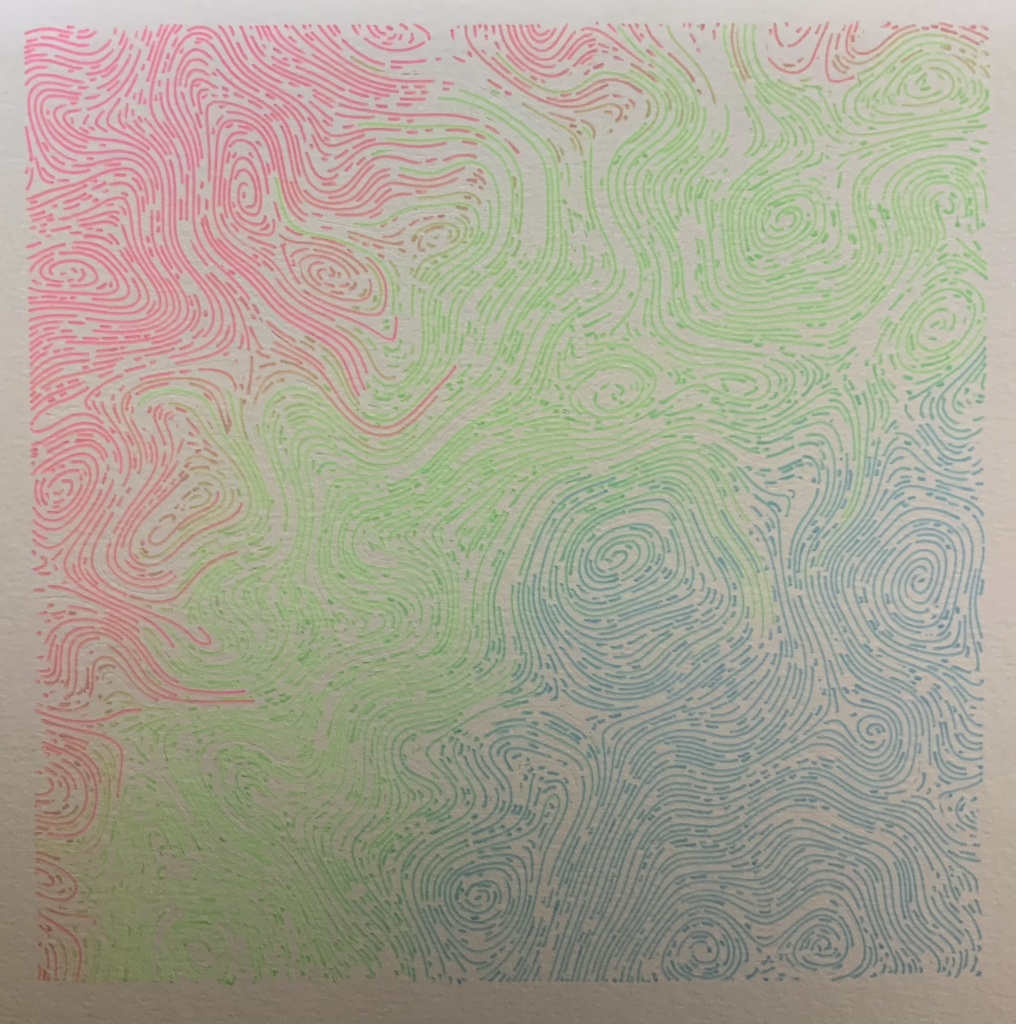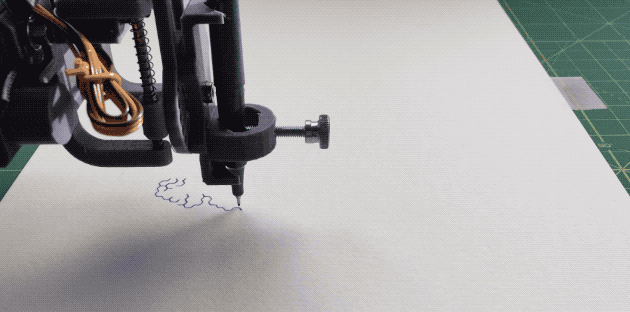Raytraced Sphere (reinder @ turtletoy)
Digital render
Analog render
Close up. The imperfections of ink flow is 80% of what makes pen plots appealing
Curl noise (reinder @ turtletoy), playing with a color changing pen.
When I don’t know what to plot, I can always browse through the hundreds of cool mandalas people draw on Mandalagaba every day. By happenstance, my life is set up such that a steady stream of plotting material is pointed at me.
Hava, by far the most advanced user of Mandalagaba, never hesitates to mix tessellations, radial symmetry and then fine tune the parameters of each resulting cell.
Simple mirror symmetry is often used to draw fauna.












